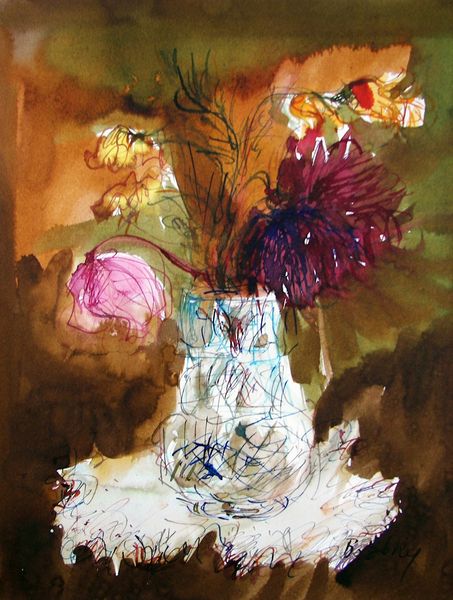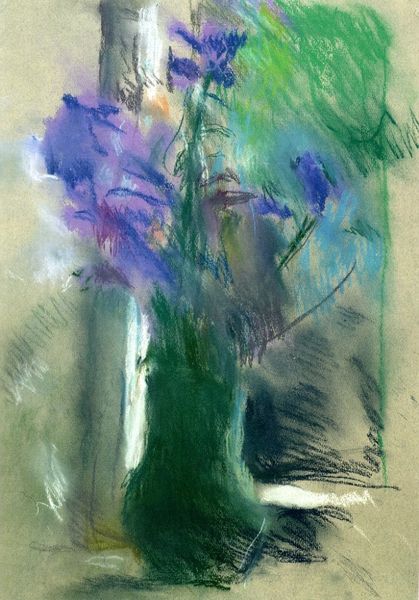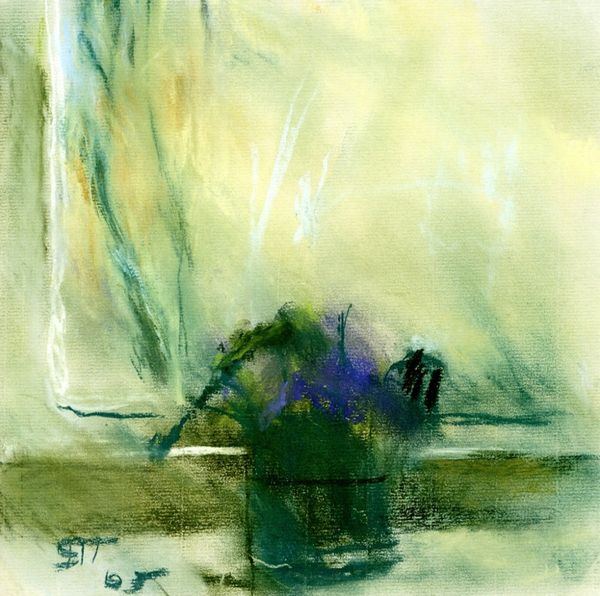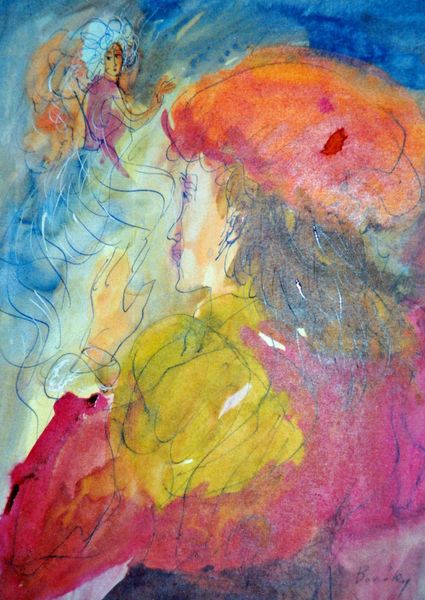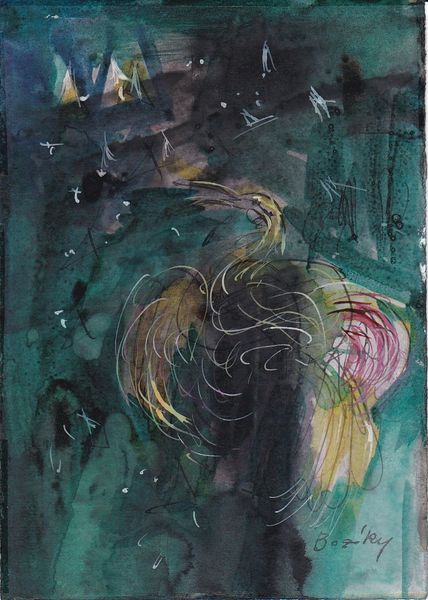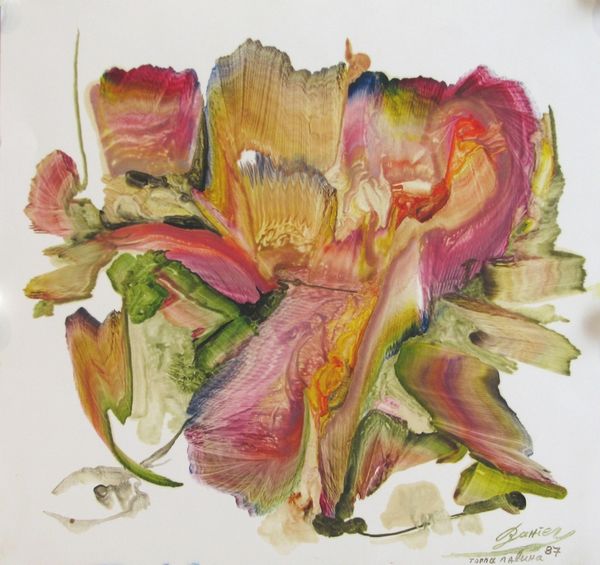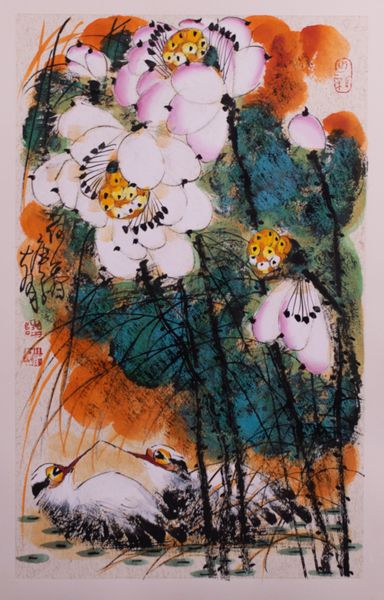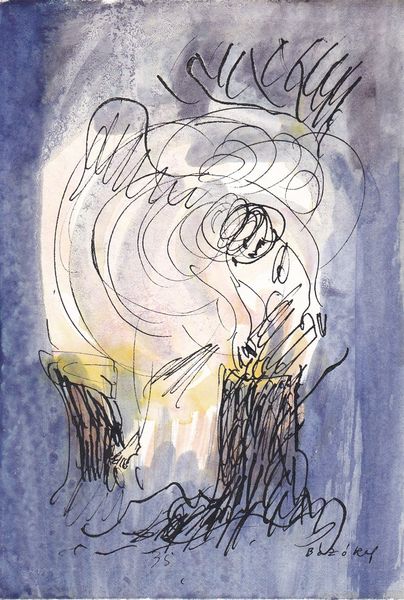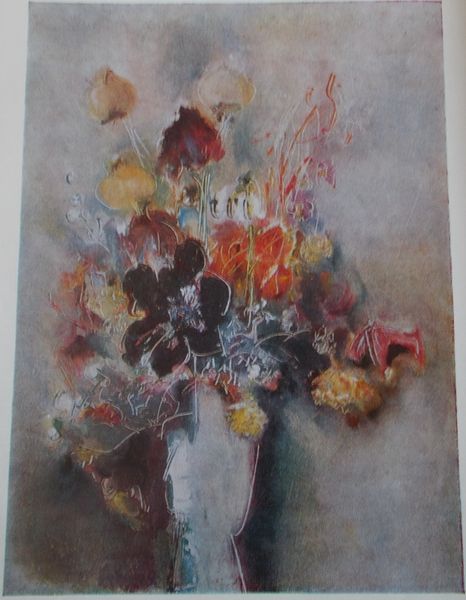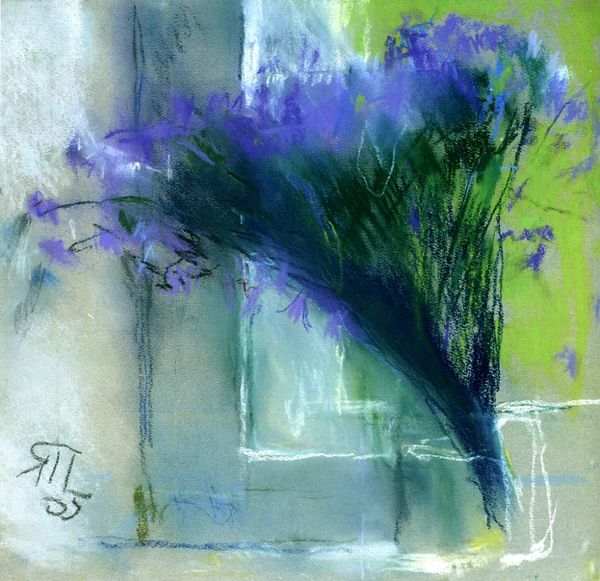
painting, photography, watercolor, impasto
#
still-life
#
abstract painting
#
painting
#
form
#
photography
#
watercolor
#
impasto
#
geometric
#
abstraction
#
line
#
watercolor
Dimensions: 27 x 19 cm
Copyright: Maria Bozoky,Fair Use
Curator: Well, this strikes me as unexpectedly somber. It’s as if the flowers are already wilting, their vibrant hues fading into the muted background. Editor: That's interesting. Allow me to introduce "Autumn Flowers" by Maria Bozoky, a watercolor still-life which leans heavily into line and abstraction. It feels evocative. Curator: Yes, the lines defining the floral arrangements almost vibrate with an unseen energy, which contradicts the melancholy of the piece. Does the artist’s biography give us any insight into this feeling? I mean, did Bozoky experience some social upheaval that mirrors these visual tensions? Editor: There’s not a confirmed date for the artwork, which restricts my contextual research somewhat. However, what about the forms themselves? Take the starkness of those colors—the sudden splashes of yellow and pink against that dreary background of greys and browns—does that provoke thought? Curator: Absolutely, especially within the historical development of the still-life genre. Flowers often symbolize ephemerality, the fleeting nature of beauty and life. However, here it feels...more direct. Like a memento mori. Editor: Perhaps we’re seeing abstraction used to emphasize those traditional associations? Look at how the outlines almost bleed, how those blocks of colour never quite coalesce into realistic petals or stems. It's a painting about suggestions more than representations, almost inviting a projection from us. Curator: Good point, and considering how women were often confined to domestic spaces throughout history, a floral arrangement might have been one of the few allowable artistic expressions available to women—so one has to consider what kind of social or even personal tensions might influence this expression. Editor: Well, I read that uncertainty differently. The absence of a solid grounding opens the piece to different interpretive models, freeing it from being anchored to anyone else's intentions. Even those historically embedded roles or struggles fade. Curator: Still, knowing about these structures helps unpack such complex nuances… otherwise aren’t we running the risk of misinterpreting, of viewing art devoid of its historical anchor points? Editor: Maybe, but seeing "Autumn Flowers" this way can open pathways that aren’t available any other way. Both perspectives could illuminate different truths about not just Maria Bozoky’s work, but what visual forms are able to accomplish even now. Curator: Yes, there’s certainly merit to considering a work divorced from its background in an effort to unearth fresh implications, despite how vital the societal element of artistic analysis can be. Editor: It does seem there are plenty of layers to pull away.
Comments
No comments
Be the first to comment and join the conversation on the ultimate creative platform.
